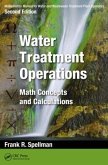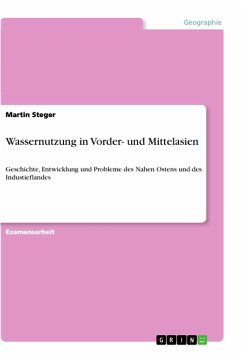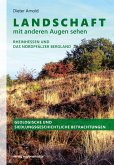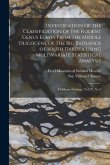Wissenschaftliche Studie aus dem Jahr 2013 im Fachbereich Geowissenschaften / Geographie - Geologie, Mineralogie, Bodenkunde, , Sprache: Deutsch, Abstract: The Middle East and North Africa (MENA region) is located between longitudes 130 W and 600 E between latitudes 150 N and 400 N covering a surface area of about 11.1 million square kilometers or about 8% of the area of the world (Fig. 1). MENA is the home for about 300 million people, or about 5% of the world's population, with an average annual population growth rate of 1.7% (World Bank, 2005). The 21 countries in the MENA region have many similarities of arid conditions (85% of the area is desert). Water resources are adversely affected as a result of changes in climate, population, economic development and environmental considerations. The MENA region can be considered as the most water-scarce region of the world (Droogers et al., 2012).Iran (one of the countries in the Middle East located in southwest Asia) was used as the case study because certain parameters (precipitation, evapotranspiration, temperature and population equivalent) used were derived from this country. Iran has a complete desert climate that is very hot in the summer and relatively cold in the winter with scarce rainfall of 200 mm/year and high evapotranspiration (Droogers et al., 2012). Water crisis has appeared in Iran as a serious problem. There are reasons for that: (1) Lack of proper water management and (2) Occurrence of drought (Motiee et al., 2000)Consequent to severe water scarcity, there is need for treatment of the generated wastewater for reuse. Constructed Wetland is one of the secondary treatments for treating primary effluent. This was designed to treat municipal sewage wastewater for one thousand persons in Iran.
Hinweis: Dieser Artikel kann nur an eine deutsche Lieferadresse ausgeliefert werden.
Hinweis: Dieser Artikel kann nur an eine deutsche Lieferadresse ausgeliefert werden.

![Constructed Wetland for municipal sewage wastewater treatment in Middle East/North Africa [MENA] (Iran) - Murangwa, Christine;Orakwue, Emelda Constructed Wetland for municipal sewage wastewater treatment in Middle East/North Africa [MENA] (Iran) - Murangwa, Christine;Orakwue, Emelda](https://bilder.buecher.de/produkte/39/39318/39318546n.jpg)






